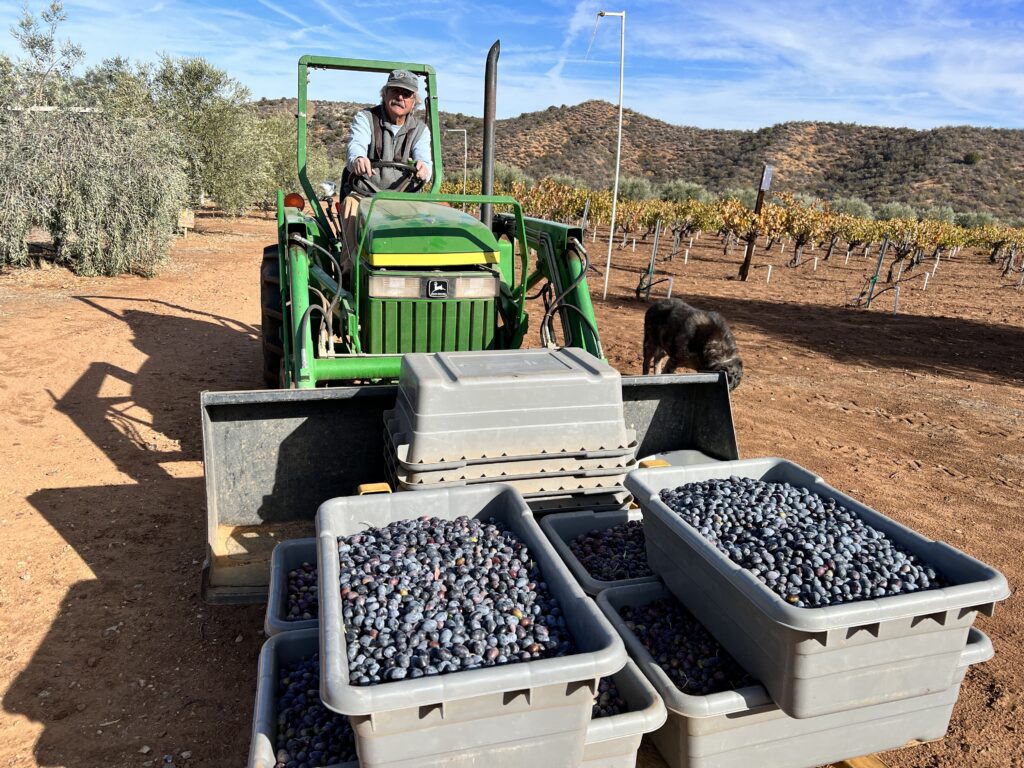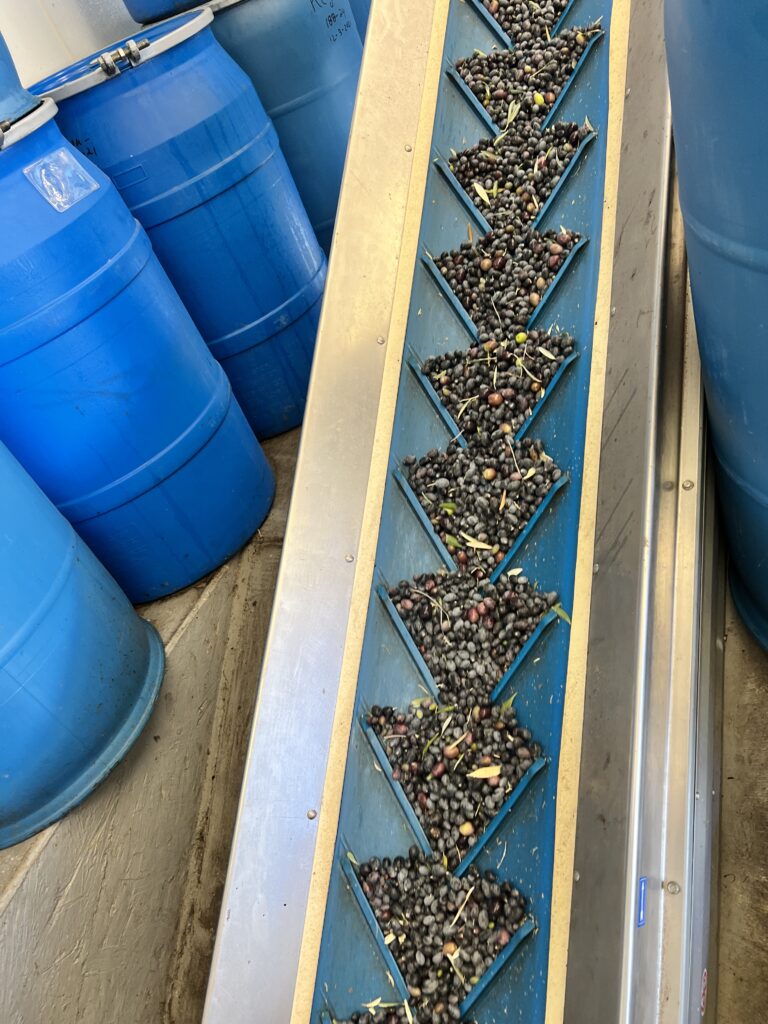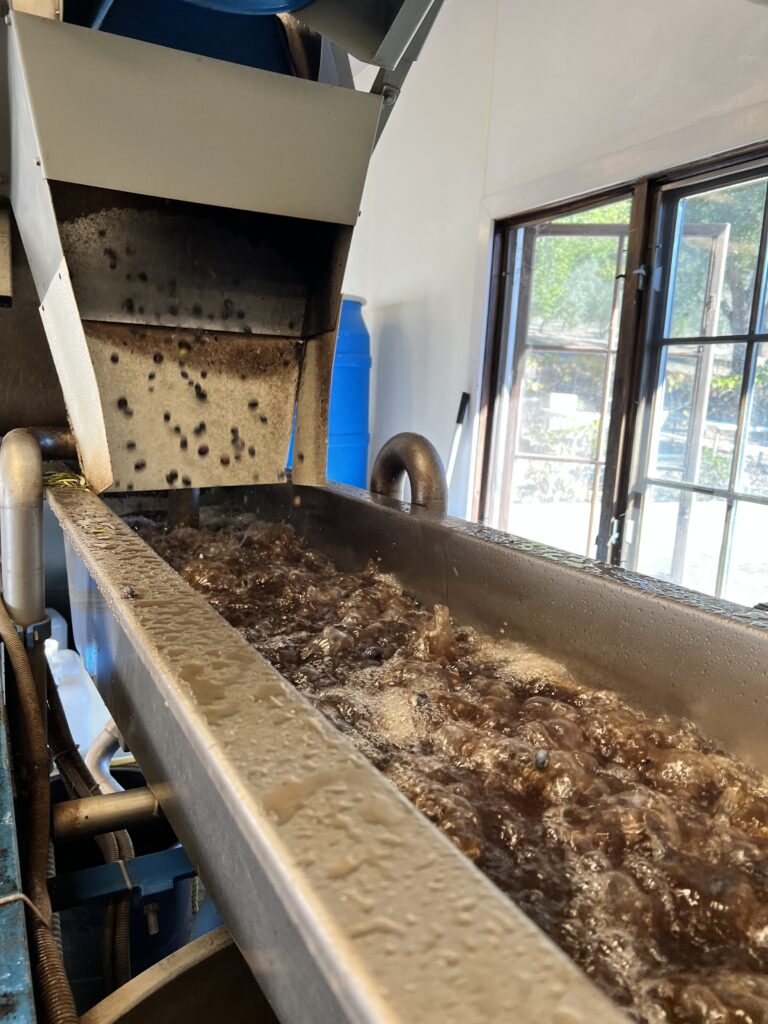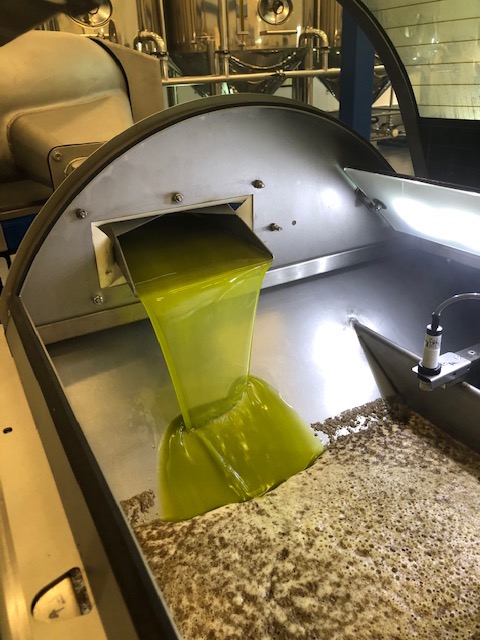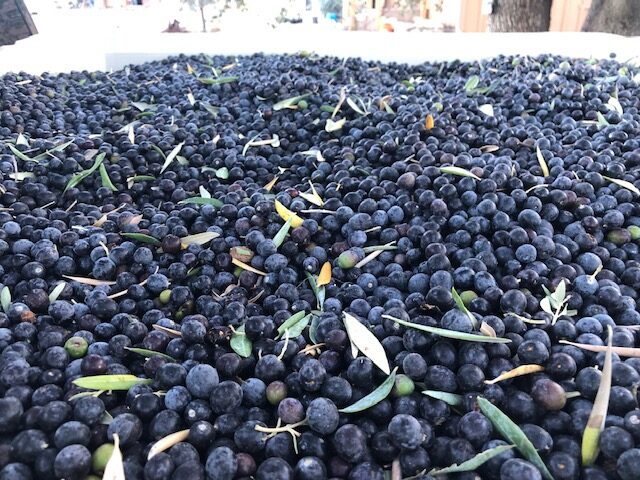By Steve Gliessman
When you purchase olive oil at the market, are you perplexed by the wide range in prices? Most labels likely say that the oil is extra virgin, cold pressed, and in many cases even certified organic. Like so many products on the shelf, it is important to try to look “behind the label.” By this, I mean try to find out:
- who produced the oil? Is it from a family farm, a cooperative, an agribusiness corporation?
- where are the trees grown? Is the location appropriate for olives, appropriate soil, etc.?
- what is the scale of the operation? Is it a small, medium, large, or mega system?
- How are the trees cared for? Is it organic, is it highly mechanized, how much water is used?
- How are the olives harvested? By hand, with rakes, shaken, or by large machines?
Consider these and other aspects that can provide information about the true sustainability of the oil you are purchasing.
Agroecological Olive Oil Production = Small scale farms + carefully cared for trees + water conservation + community engagement + relationship-based market
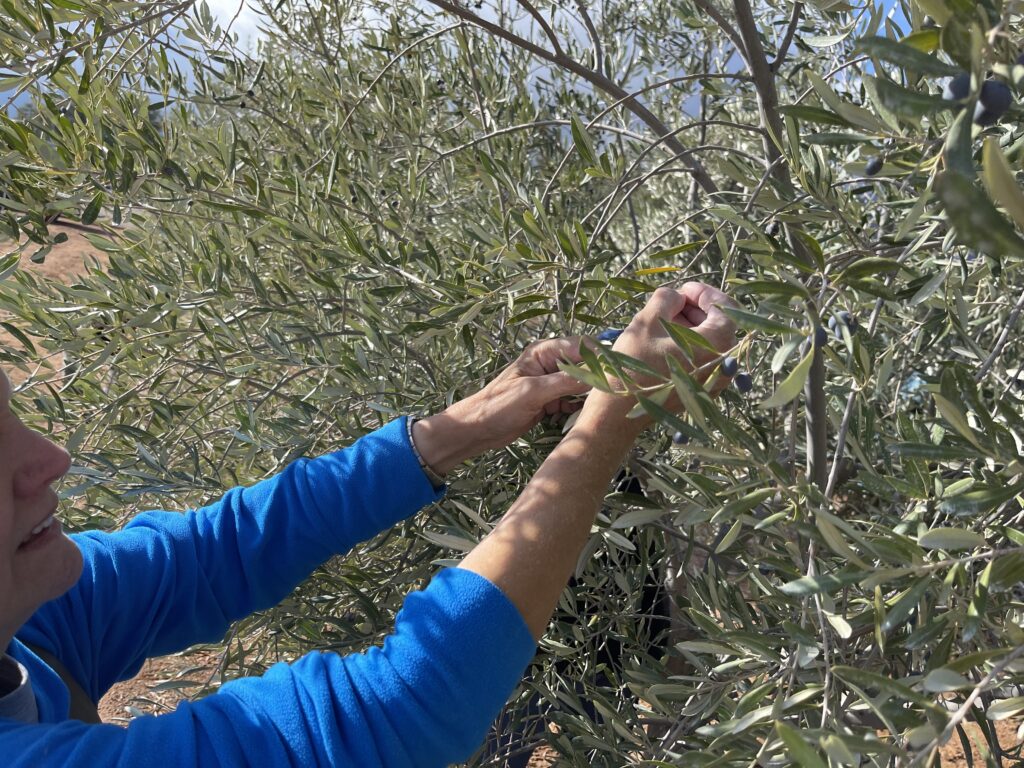
Here’s the story behind Condor’s Hope Olive Oil:
• Our trees are planted and cared for in the traditional way that olives have been grown in the Mediterranean Sea region for thousands of years. The “culture” of olives is something that is passed down from generation to generation, from parents to children, and it is easy to find olive groves that are hundreds of years old that support the communities that care for them. Our trees are only 23 years old, yet we hope they are just the beginning of a long tradition. Friends who have helped us harvest the olives know what we mean when we say that it is important to keep the connection between people and the land.
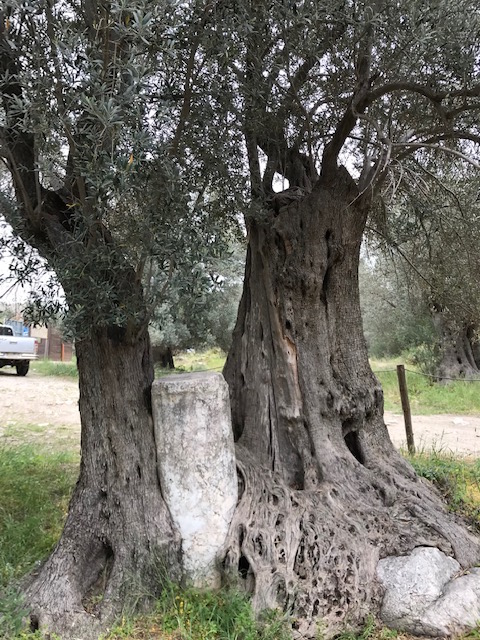
• How we care for the trees is based on this tradition. Planted on a 20’ by 20’ spacing, our trees have room to be trees! At the same time, we prune the trees so they have open centers and don’t get too tall. We consider both fruit production and ease of harvesting when we prune. The trees and the people are part of the equation. The space between trees is cultivated to create what we call a “dust mulch” so that moisture from the rains is held in the soil for the trees to access during the hot summer. Being able to navigate between trees on our little tractor also matters and is part of the equation so we can keep water use to a minimum in a water limited environment. This is the same environment olive trees in the Mediterranean region thrive in. Our certified organic trees depend on us to place a trap in each tree to capture the olive fruit fly (the main olive pest in our region) so we don’t have to spray even with organically acceptable materials that kill non-target insects, including honey bees. We also use a natural kaolin clay spray on the trees that coat the olives. The female fruit fly won’t lay her eggs through the clay coating on the olives. This is a repellent, not a toxin!
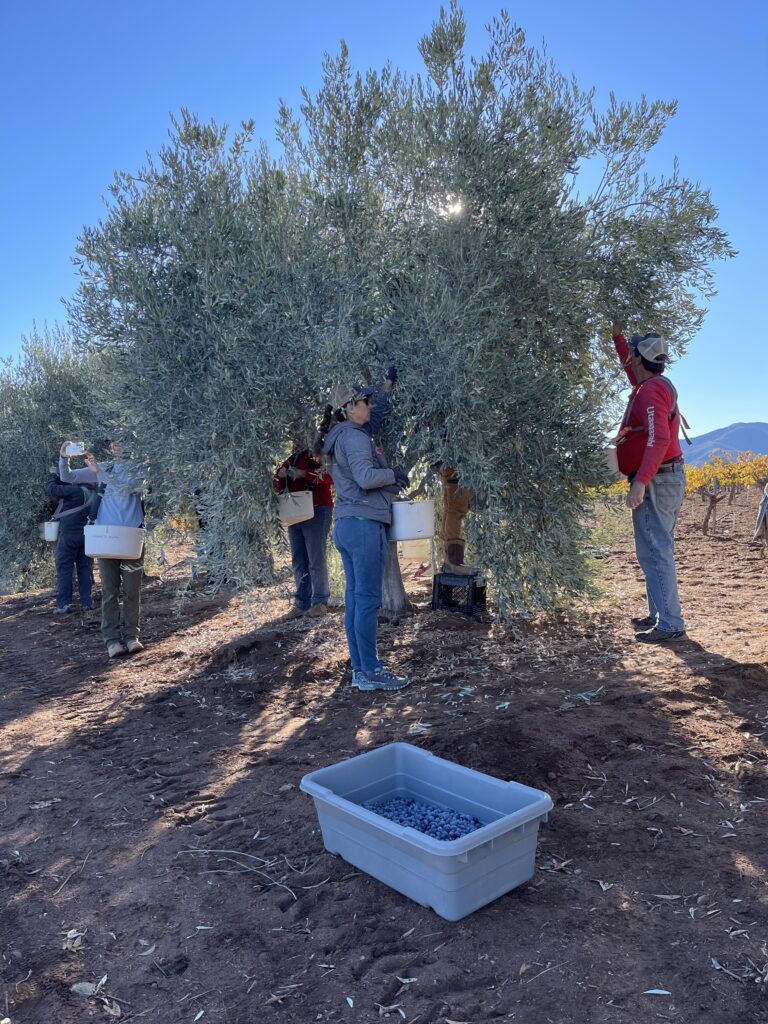
• Most of the harvest of the olives is done by folks we invite to the harvest – friends, neighbors, family, and wine club members . We continue the age-old process of a community helping each other with the harvest, bringing in the olives while sharing a meal, song, wine, and good cheer. By hand into belly baskets, hand raked onto tarps spread below the trees, or using a hand-held electric set of vibrating fingers that knock the olives off the tree, each olive has its connection with people. We deliver the harvested olives to a nearby mill where we pay a per ton fee to have the oil extracted from the olives. This is not all that dissimilar to the use of a community mill in Mediterranean villages where after a shared harvest, farmers line up to have their olives processed at the community mill, except we pay a private mill to do the work.
How different this is from what is becoming the “industry” norm for producing olive oil! In the industrial quest for reducing costs while increasing production, a new form of growing olives and producing oil is quickly become the standard. Called the “super intensive high density” system for producing olives and oil, plantlets are spaced 3 feet apart in rows 5-6 feet apart. The rows are then pruned into a hedge-like structure by mechanical tractor-driven pruners to form hedges about 2 feet thick and 6 feet tall (insert photo of high density system). The olive tree is not allowed to become a tree! This structure then allows a monstrous harvesting machine to crawl over each row, and with rubber fingers the hedges are battered so that olives fall into a conveyer system that passes them into gondolas that can hold 4 tons of olives each (insert photo of harvester). Human hands never touch the olives. Tractor, truck, and harvester drivers are the main human participants. One of these harvesters costs more than a million dollars. No small farm can afford such equipment. Corporate entities become the determiners of price and volume. Since the shrubs in the hedges are not allowed to become trees, this system soon becomes woody and less productive. The solution? Take the 20-25 year old hedges out and start over by replanting the system. The bottom line becomes the driving force, not the culture of olive that has existed over centuries.

This new norm is reflected in the price of the oil. Those of us producing oil with the human-centered approach can’t compete with the industrial model. The economies of scale don’t work for us. But if the price of oil reflected the true cost of maintaining a system that is not only ecologically sustainable, but also social and culturally sustainable, then the higher price is completely justified. By looking behind the label, we hope you will support those of us who are small producers, using hand-crafted methods. We do everything we can to keep the price as low as possible for our oil, but we can only do so much and yet still maintain the traditional culture of our oil. We hope this understanding enhances your enjoyment.
Curious about the health benefits of olive oil? You can learn more here.
